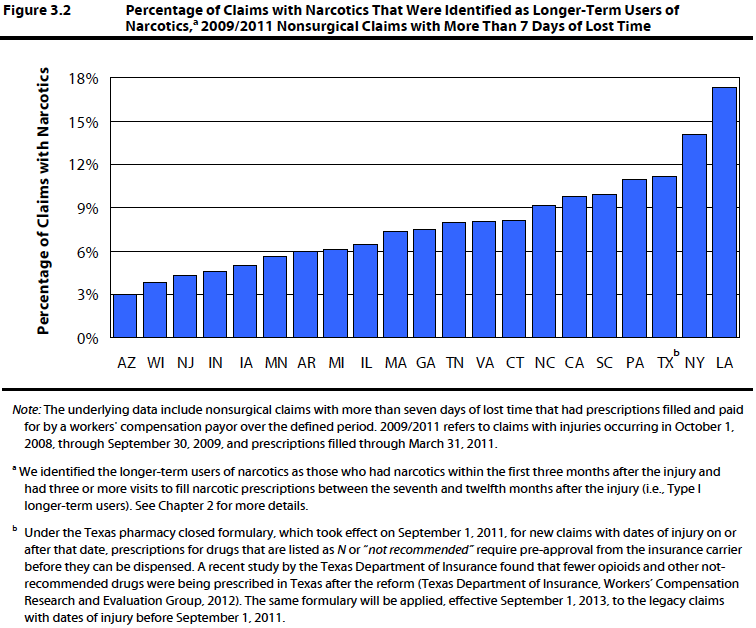Narcotics abuse among the American public has received a good amount of publicity lately — and rightly so. There are now more workers addicted to opioids than ever before. And it seems physicians may not be doing all they can to regulate patient intake.
In fact, a new report by the Workers Compensation Research Institute (WRCI) states that one in 12 injured workers who started prescription narcotics were still using them three to six months later. “Longer-Term Use of Opioids” examined long-term use of narcotics in 21 states and how often physicians monitored injured patients after prescribing the drugs.
“This study addressed a very serious issue: how often doctors followed recommended treatment guidelines for monitoring injured workers under their care, who are longer-term users of narcotics,” said Dr. Richard Victor, WCRI’s Executive Director. “This study will help public officials, employers, and other stakeholders understand as well as balance providing appropriate care to injured workers while reducing unnecessary risks to patients and costs to employers.
”
Among the key findings were:
- Longer-term use of opioids continued to be prevalent in workers compensation, especially in Louisiana and New York, as well as Texas, Pennsylvania, South Carolina, California and North Carolina.
- Drug testing was used less frequently than recommended by medical treatment guidelines. Among claims with longer-term use of narcotics, 18-30% received drug testing in most states studied, with the 21-state median at 24%. Over the study period, the percentage of workers with longer-term use of narcotics who received at least one drug test increased from 14 to 24% in the median state.
- Use of psychological evaluation and treatment services continued to be low. Only 4–7% of the injured workers with longer-term narcotic use received these services in the median state. Even in the state with the highest use of these services, only 1 in 4 injured workers with longer-term narcotic use had psychological evaluation and 1 in 6 received psychological treatment.
buy zocor online greendalept.com/wp-content/uploads/2023/10/zocor.html no prescription pharmacy
Little change was seen in the frequency of use of these services.
The graph below is disturbing, considering the addictive nature of opioids, especially the longer the patient is dependent on them.
In response to these findings and the media coverage surrounding them, the Office of National Drug Control Policy (ONDCP) issued a statement regarding an initiative aimed at addressing the problem. The agency unveiled its new web-based program that was developed to help doctors prescribe addictive medications, such as Oxycontin and Percocet, in a more safe and controlled manner.
Prescription drug abuse is the nation’s fastest-growing drug problem and affects everyone from teenagers to stay-at-home moms to, most likely, the very people you work with. We are dealing with what the Centers for Disease Control and Prevention classifies as an epidemic. And though the Obama Administration’s National Drug Control Strategy and the ONDCP’s 2011 Prescription Drug Abuse Prevention Plan are helpful in addressing the problem, they will in no way solve it. For that, education is key, not only in the homes and schools of the American public, but in the workplaces as well. It’s smart risk management.


